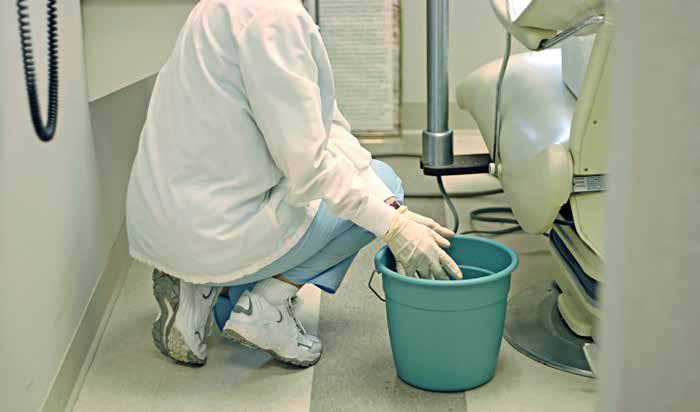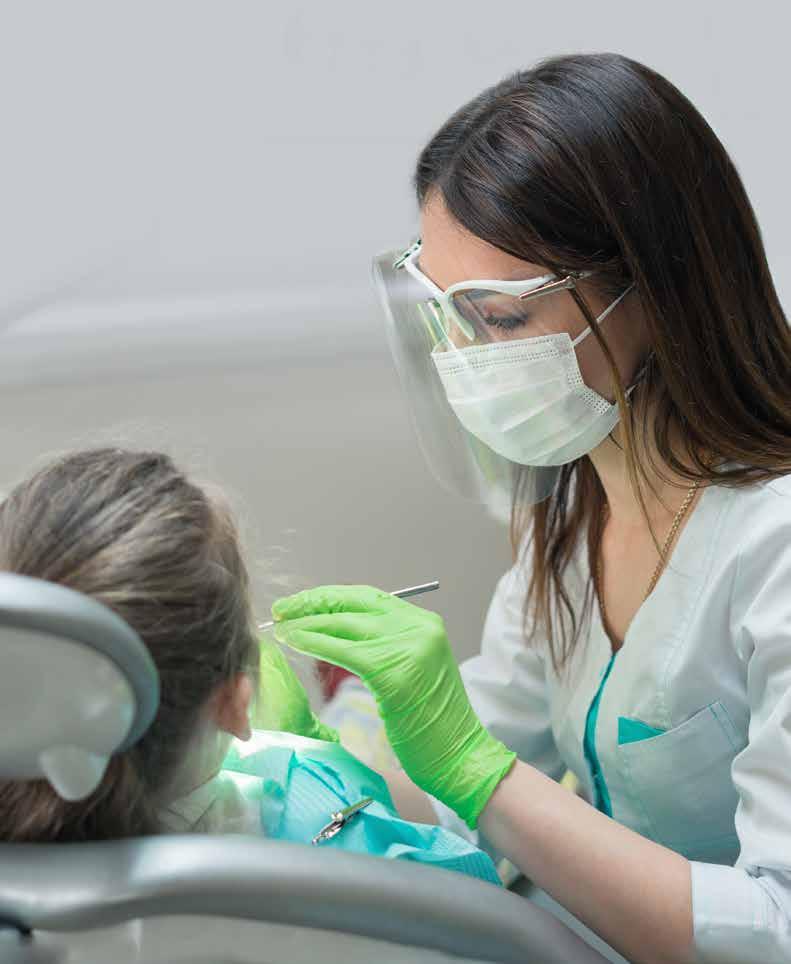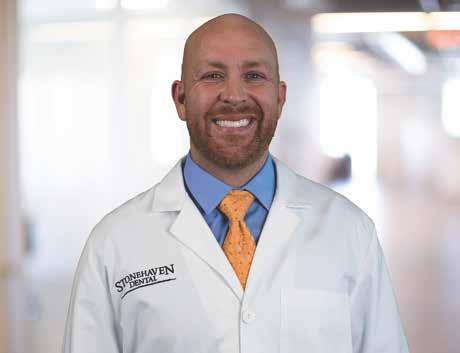> Hygiene
Selecting the right facemask The better the fit, the more likely it will be worn.
: By Laura Thill
There’s no skirting the importance of facemasks both during – and between – patient visits. Dental professionals face constant exposure to microorganisms from dental unit waterlines and bioaerosols, which are generated by dynamic dental instruments. Splash, splatter and submicron aerosols continue to be a source of potential infection. And, because submicron particles are known to stay airborne for up to 30 minutes following an ultrasonic scaling procedure, the risk does not end once the procedure is over or the patient leaves the treatment room.
“Based on a 2004 classic literature review of aerosols and splatter by Harrel and Molinari, ultrasonic scaling has been shown to produce the greatest amount of aerosol and splatter contamination due to the composition of particles of varying size, which range from 0.001 to 100 μ,” says Leann Keefer, RDH, MSM, director, clinical services & education, Crosstex International, now a proud member of HuFriedy Group. “The smaller the size, the greater the potential it will be inhaled and penetrate and lodge in the lungs, which is thought to carry the greatest potential for transmitting infections. Additionally, because these submicron particles stay airborne for extended periods, dental clinicians and team members must opt to don/ wear, at a minimum, a Level 1 mask between patients when they are turning/cleaning the treatment room.”
A mask for every task Facemasks have seen improvements in recent years with regard to fit and efficiency. And while some masks may look similar, each brand or design
18
offers unique characteristics, which affect its level of protection, notes Keefer. Selecting the right masks for a dental practice depends on the types of procedures for which they’ll be used. For instance, an ASTM Level 3 mask is recommended for procedures such as ultrasonic scaling or air-polishing, which produce moderate-toheavy amounts of fluid, spray and/or aerosols, according to Keefer. (See the table: ASTM levels) “Manufacturers who use quality sourced materials often choose to submit their products for voluntary ASTM testing,” says Keefer. “ASTM International is a standards organization, as well as a globally recognized leader in the development, product testing and delivery of international voluntary consensus standards. An ASTM specification determines the
ASTM* Levels ASTM Level 1
ASTM Level 2
ASTM Level 3
Ideal for procedures where low amounts of fluid, spray and/ or aerosols are produced. • Patient exams • Operatory cleaning and maintenance • Impressions • Lab trimming, finishing, and polishing • Orthodontics
Ideal for procedures where light-to-moderate amounts of fluid, spray and/or aerosols are produced. • Limited oral surgery • Endodontics • Prophylaxis • Restorative/composites • Sealants
Ideal for procedures where moderate-to-heavy amounts of fluid, spray, and/ or aerosols are produced. • Complex oral surgery • Crown preparation • Implant placement • Periodontal surgery • Use of ultrasonic scalers (magnetostrictive and piezo) • Laser-based applications
*ASTM Intemational is an international standards organization, as well as a globally recognized leader in the development, product testing, and delivery of international voluntary consensus standards. The latest version of the standard specifying performance of face masks, ASTM F2100- 11, was released in April 2011. Face mask material performances is based on testing for fluid resistance, bacterial filtration efficiency (BFE), particulate filtration efficiency (PFE), breathability, and flammability.
Efficiency In Group Practice : ISSUE 3 • 2020
dentalgrouppractice.com


















